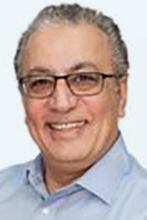

Brand Protection |
Sponsored by |

|



 DOTZON's 2025 study analyzes over 410 corporate dotBrands to reveal how companies strengthen digital identities through custom top-level domains. Audi retains first place, while newcomers like CRS and rising performers such as Schwarz demonstrate growing strategic use.
DOTZON's 2025 study analyzes over 410 corporate dotBrands to reveal how companies strengthen digital identities through custom top-level domains. Audi retains first place, while newcomers like CRS and rising performers such as Schwarz demonstrate growing strategic use.
 As artificial intelligence reshapes how users navigate the web, domain names may undergo explosive growth, potentially reaching tens of billions. A new infrastructure of trusted digital identities could become essential for AI agents.
As artificial intelligence reshapes how users navigate the web, domain names may undergo explosive growth, potentially reaching tens of billions. A new infrastructure of trusted digital identities could become essential for AI agents.
 Many previous pieces of research have focused on the desirability of a comprehensive scoring system, to be used for ranking results identified as part of a brand-protection solution, according to their potential level of threat. Such scoring systems offer the capability for identifying prioritised targets for further analysis, content tracking or enforcement actions.
Many previous pieces of research have focused on the desirability of a comprehensive scoring system, to be used for ranking results identified as part of a brand-protection solution, according to their potential level of threat. Such scoring systems offer the capability for identifying prioritised targets for further analysis, content tracking or enforcement actions.
 As published on June 24, 2025, it is with no surprise that the AFNIC was renewed as the backend registry provider of the .PARIS new generic Top-Level Domain. What caught my attention in the announcement was this paragraph: “Afnic’s remit will also be expanded to include communication and promotion of the .paris TLD, as well as the development of initiatives designed to increase its adoption by businesses and private individuals.”
As published on June 24, 2025, it is with no surprise that the AFNIC was renewed as the backend registry provider of the .PARIS new generic Top-Level Domain. What caught my attention in the announcement was this paragraph: “Afnic’s remit will also be expanded to include communication and promotion of the .paris TLD, as well as the development of initiatives designed to increase its adoption by businesses and private individuals.”
 The ability to rank results according to the level of threat they pose (based on factors such as, for example, the extent to which a webpage relates to a brand of interest) is a key component of many brand protection services. The prioritisation process has a number of purposes, including the identification of: (a) priority targets for further analysis; (b) candidates for content tracking (i.e. regular reinspection of content or configuration, and the generation of an alert if high-concern findings are identified) - as may be appropriate in cases where a domain name presents a high potential level of risk but is not currently associated with any live site content; and (c) priority targets for enforcement actions.
The ability to rank results according to the level of threat they pose (based on factors such as, for example, the extent to which a webpage relates to a brand of interest) is a key component of many brand protection services. The prioritisation process has a number of purposes, including the identification of: (a) priority targets for further analysis; (b) candidates for content tracking (i.e. regular reinspection of content or configuration, and the generation of an alert if high-concern findings are identified) - as may be appropriate in cases where a domain name presents a high potential level of risk but is not currently associated with any live site content; and (c) priority targets for enforcement actions.
 The introduction of GDPR in 2018, and the subsequent tightening of privacy regulations around the world, was a necessary step toward protecting user data. Consumers gained critical rights over their personal information, and companies were forced to adopt stronger standards for how they collect, store, and use that data. However, one unintended consequence has been the erosion of access to domain registration information once easily available through WHOIS databases.
The introduction of GDPR in 2018, and the subsequent tightening of privacy regulations around the world, was a necessary step toward protecting user data. Consumers gained critical rights over their personal information, and companies were forced to adopt stronger standards for how they collect, store, and use that data. However, one unintended consequence has been the erosion of access to domain registration information once easily available through WHOIS databases.
 When major events like the Super Bowl are on the horizon, cybercriminals exploit public trust by creating fraudulent domains for fake betting sites, phishing, and malware distribution. CSC's research into top online sportsbooks highlights the hidden risks of dormant domains, which, though inactive, can quickly be repurposed for cyber attacks. Overlooked yet dangerous, these domains play a key role in impersonation, misinformation, and scams targeting event-driven traffic, underscoring the need for continuous monitoring of lookalike, dropped, re-registered, and newly registered domains.
When major events like the Super Bowl are on the horizon, cybercriminals exploit public trust by creating fraudulent domains for fake betting sites, phishing, and malware distribution. CSC's research into top online sportsbooks highlights the hidden risks of dormant domains, which, though inactive, can quickly be repurposed for cyber attacks. Overlooked yet dangerous, these domains play a key role in impersonation, misinformation, and scams targeting event-driven traffic, underscoring the need for continuous monitoring of lookalike, dropped, re-registered, and newly registered domains.
 You may have read our previous blog about the pending reduction of digital certificate life cycles to just 90 days. This past weekend, the issue gained momentum at the Certification Authority Browser Forum when more detail was discussed following the proposed ballot to set a timeline for shorter lifetime certificates by Apple. This creates real urgency for organizations of all sizes to seriously consider and implement automation into their certificate life cycle management.
You may have read our previous blog about the pending reduction of digital certificate life cycles to just 90 days. This past weekend, the issue gained momentum at the Certification Authority Browser Forum when more detail was discussed following the proposed ballot to set a timeline for shorter lifetime certificates by Apple. This creates real urgency for organizations of all sizes to seriously consider and implement automation into their certificate life cycle management.
 One major element of many brand-protection programmes is the use of an algorithm to sort the findings identified through monitoring, according to their relevance or level of potential threat. This prioritisation process offers a number of benefits, including the identification of priority targets for further analysis, content tracking, or enforcement.
One major element of many brand-protection programmes is the use of an algorithm to sort the findings identified through monitoring, according to their relevance or level of potential threat. This prioritisation process offers a number of benefits, including the identification of priority targets for further analysis, content tracking, or enforcement.
 As counterfeit networks grow more elusive, AI-driven clustering could revolutionize brand protection. By linking disparate findings, identifying serial infringers, and enabling bulk enforcement, AI offers a smarter approach to monitoring and takedown efforts. Yet, challenges remain - from data reliability to analyzing complex content. Companies that master AI-driven clustering may gain a significant advantage in the fight against brand abuse.
As counterfeit networks grow more elusive, AI-driven clustering could revolutionize brand protection. By linking disparate findings, identifying serial infringers, and enabling bulk enforcement, AI offers a smarter approach to monitoring and takedown efforts. Yet, challenges remain - from data reliability to analyzing complex content. Companies that master AI-driven clustering may gain a significant advantage in the fight against brand abuse.